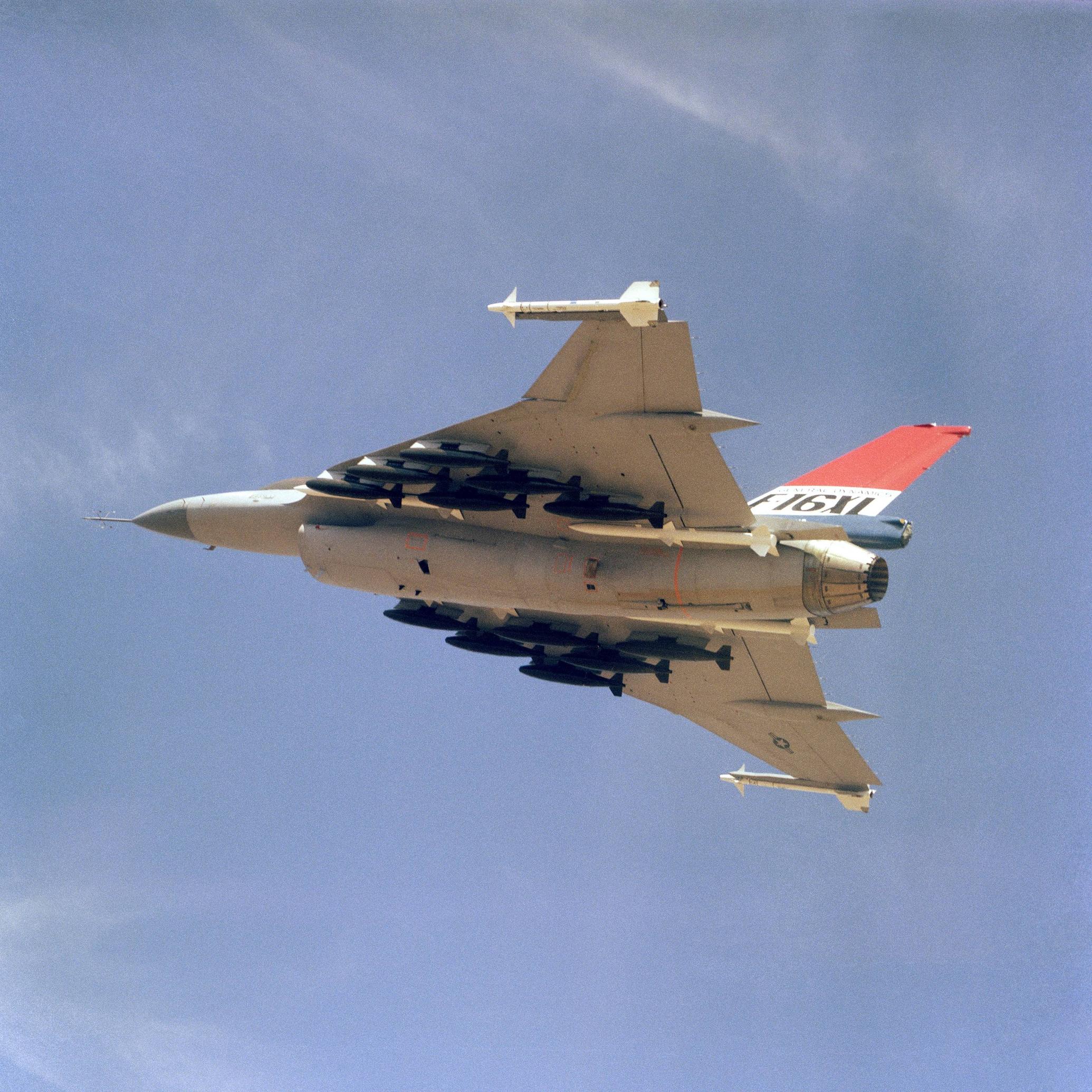What are the benefits of the 'cranked arrow' delta wing that was used on the variant of the F-16, the F-16XL?
 Sourceenter link description here
Sourceenter link description here
-
$\begingroup$ The goal of the cranked arrow was to have a high sweep inboard panel for low drag at supersonic speeds, and a low sweep outboard panel to provide better handling and maneuverability at subsonic speeds.[citation needed] (from Wikipedia) $\endgroup$– SanchisesCommented Oct 5, 2016 at 14:20
-
2$\begingroup$ Possible duplicate of What are the different wing planforms? What are each's advantages? Where are they commonly used? $\endgroup$– user14897Commented Oct 5, 2016 at 14:32
-
$\begingroup$ Totally agree with @RalphJ, voting to not close. $\endgroup$– Jae CarrCommented Oct 5, 2016 at 17:18
2 Answers
There are a few reasons for choosing the cranked delta wing, as used in F-16 XL. The main one is to maintain comparable performances in the supersonic and sub/transonic speeds- a reason similar to the variable geometry wings, like one used in F-111, with the same disadvantages. According to NASA,
The new wing, common for both the -1 and -2 versions, was designed to provide the F-16 aircraft with improved supersonic performance while maintaining comparable transonic performance to that provided by the current F-16 design.
Basically, you want to have good performance in the subsonic regime- improving the low speed handling and acceptable landing characteristics (the delta wings are not exactly known for that) and in supersonic regime- low aspect ratio and low drag. The result is a compromise, which is more often than not, more trouble than it is worth. From this paper:
When compared to a delta wing, a double delta wing and cranked arrow wing planforms indicate higher aerodynamic performance and maneuverability at high angles of attack, because a vortex generated from the strake wing (or the inboard wing) stabilizes the flow on the main wing (or the outboard ing) .. . furthermore, the outboard wing leading-edge that has smaller sweepback angle than that of the inboard wing increases the wing aspect ratio as a whole and low-speed performance is improved.
Another issue with the cranked delta wings is its tendency to pitch up at high angles of attack.
The main benefits are:
- High root thickness, so the wing can be made stiffer and stronger where the loads are highest.
- Better pitch stability in the post-stall region, so no AoA limit needs to be observed. The X-31 could maneuver with thrust vectoring only because its cranked arrow delta wing was more or less neutral in pitch over the full AoA range. A simple delta wing produces strong pitch-up moments in the post-stall region wich would quickly overpower the moments possible with thrust vectoring.
